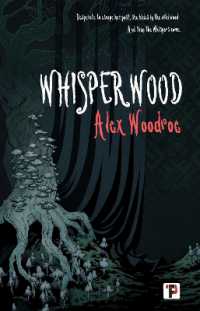- ホーム
- > 洋書
- > 英文書
- > History / World
Full Description
Excavations carried out from 1984-1985 at Ditches in Gloucestershire identified a large, late Iron Age enclosure which contained a remarkably early Roman villa. This long awaited excavation report reinterprets this evidence in the light of more recent studies of the late Iron Age-Roman transition. It extends our understanding of the Ditches-Bagendon-Cirencester oppida complex, and corroborates the latest thinking on the nature of Romanisation. New conceptions are challenging the significance of the Claudian invasion of AD 43, suggesting that Roman political influence in southern Britain was much more important than commonly thought decades before this. The Roman take-over was a long drawn-out process, which began especially with intimate links between Caesar and his successors and the dynasts they supported or implanted in Britain on the other. High status archaeological sites are central to these relations, including the so-called oppida , developed in southern Britain in the decades between Caesar's raids and the Claudian occupation. Ditches provides further corroborative evidence. Several phases of Romano-British building were uncovered, revealing an unusual sequence of development for a villa in the region and representing an exceptionally early villa beyond south-east England. Discoveries included a well-preserved cellar and a range of finds, including Gallo-Belgic wares, Iron Age coins, coin moulds, Venus figurines and brooches indicating high-status occupation. The form and date of the villa also provides evidence of connections between the late Iron Age elites and communities of southern England and Gaul. Further evidence suggests the villa was abandoned in the later second century AD, emphasising the unusual sequence of the site.
Contents
The Excavations
Introduction
The 1984-5 Excavations; Preservation of the villa Stephen Trow
Geophysical survey Tom Moore
Discussion of the Iron Age and Roman remains Stephen Trow, Simon James and Tom Moore
The Finds
Gallo-Belgic and local finewares Val Rigby
The Samian Steven Willis
The Coarseware pottery Tom Moore
Brooches Don Mackreth
Iron Age coins Colin Haselgrove
Roman coins Richard Reece
Claudian provincial coin Robert Kenyon
An Iron finger-ring Martin Henig
Pipeclay figurines Catherine Johns
Glass John Shepherd; The touchstone Stephen Trow, with Andrew Middleton and David Moore; Worked stone Fiona Roe; Worked bone Stephen Trow;
Lead/lead alloy snake bracelet Catherine Johns
Finds of lead alloy Stephen Trow
Finds of copper alloy Stephen Trow
Finds of iron Stephen Trow
Carpentry nails Stephen Trow
Finds of baked clay Stephen Trow and Tom Moore
Wall plaster Tom Moore
Marine mollusk shells Stephen Trow and Tom Moore
Human remains Kirsi Lorentz and Tom Moore
The charred plant remains Jacqueline P. Huntley
Animal bone Kevin Rielly








